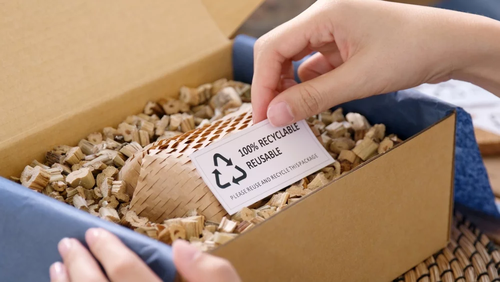
A partially cured or incompletely cured adhesive may contain unreacted compounds. This can result in reduced bond strength and poor environmental resistance and durability.

A partially cured or incompletely cured adhesive may contain unreacted compounds. This can result in reduced bond strength and poor environmental resistance and durability.

Pressure from governments and the public for companies to adopt reusable packaging is increasing. In this article, Emma Samson from environmental consultancy Searious Business outlines her top 10 commercial reasons why companies should make this switch as soon as possible.

In today's rail industry, the demands for performance, safety, and sustainability are constantly increasing. Elastic bonding and sealing remains one of the primary adhesive applications in the rail industry and directly impact the sustainability and safety of the rail vehicle. For example, bonding and sealing of various parts such as windows, panels, roofs and walls require not only reliable mechanical performance, but also adherence to the market norms and regulations with respect to flame, smoke, toxicity testing, and restrictions related to iso-cyanate usage.

International Adhesive & Sealant Day, celebrated each year on 29th September, gives everyone an ideal opportunity to highlight how the industry’s products are crucial in a modern world and help create a more sustainable society.

Research and Markets (RM) anticipates that the packaging adhesives market size which is estimated at USD 29.20 billion in 2024, is expected to reach USD 39.89 billion by 2029, growing at a CAGR of 6.44% during the forecast period (2024-2029).

Henkel Adhesive Technologies will be participating at the Labelexpo Americas 2024, held from September 10th to 12th in Chicago. Henkel will present its portfolio of pressure-sensitive adhesives (PSAs) certified as compatible with post-consumer recycling processes according to the test protocol of the Tag and Label Manufacturers Institute

Pressure-sensitive adhesives (PSAs) are crucial components in a variety of industries, including packaging, automotive, construction, and electronics. However, the manufacturing process of PSAs poses several environmental challenges, such as the use of solvents, energy consumption, and waste generation. As the demand for environmentally friendly products rises, manufacturers are evaluating their current sustainability practices and finding ways to minimize their environmental impact. This article explores various sustainability practices in PSA manufacturing, highlighting key strategies, benefits, challenges, and future trends.

Henkel and Covestro have embarked on a collaborative effort to advance the sustainability of adhesives within timber construction. Covestro, known for its polyurethane-based materials derived from bio-attributed raw resources, partners with Henkel to leverage these materials for crafting high-performance adhesive solutions.

Allied Market Research (AMR) anticipates that the global aerospace adhesives market size was valued at $0.9 billion in 2022, and is projected to reach $1.5 billion by 2032, growing at a CAGR of 5% from 2023 to 2032.

In August 2024, the Indian Styrene Copolymer market underwent a significant price decline, reducing by 1.3% compared to July. The reduced pricing can be primarily attributed to a temporary contraction in demand across key sectors such as automotive and electronics, which are significant consumers of Styrene Copolymer. Additionally, seasonal factors contributed to a decline in downstream manufacturing activities, further reducing the demand.

SÜDPACK and LEIBINGER have tested the suitability of continuous inkjet (CIJ) inks for printing on recyclable films for foods sterilized after being packaged, with a combined packaging and printing solution expected to save food manufacturers time and ensure investment security.

In August 2024, the Indian Styrene Copolymer market underwent a significant price decline, reducing by 1.3% compared to July. The reduced pricing can be primarily attributed to a temporary contraction in demand across key sectors such as automotive and electronics, which are significant consumers of Styrene Copolymer. Additionally, seasonal factors contributed to a decline in downstream manufacturing activities, further reducing the demand.